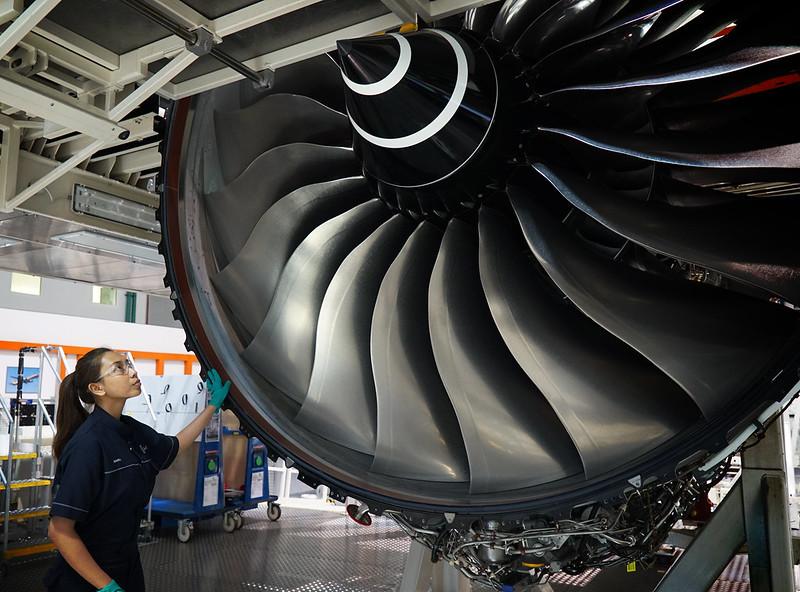Rolls-Royce Plays Long Game In Blade Production; Green Efforts Step Up

SINGAPORE—Rolls-Royce is continuing to produce Trent 1000 and Trent XWB fan blades in Singapore at maximum volume, despite depressed demand for widebody aircraft in recent years as a result of the pandemic.
The engine-maker’s Fan Blade Singapore (FBSG) facility at Seletar Aerospace Park is also beginning production of Trent XWB-97 blades. This comes after it ceased manufacturing the Airbus A380’s Trent 900 blades in 2021. Rolls-Royce will be hiring 150 new staff and 130 new trainees in 2022 to fulfill current and future demand across its partnerships, including at local engine MRO provider SAESL.
FBSG has the capacity to produce 6,600 blades annually. All of Rolls’ wide chord fan blade volume was consolidated at the facility as part of the group’s restructuring program in August 2020. FBSG is now in the early process of manufacturing the more powerful Trent XWB-97 blades and is generating the First Article Inspection Report as part of the rolling in process.
“The facility is set up for us to deliver fan blades over the decades to come and we look very closely at what the demand signal [for widebody aircraft] looks like for all the different engine types. And we have our flow line set up in a way that it can mix between the different fan blade types,” said Bicky Bhangu, Rolls-Royce’s president for Southeast Asia, the Pacific and South Korea.
“We’re definitely positioned to take a majority of the global volumes to be able to run out, as and when the demand signals from the global fleet ramps up,” he added.
Rolls says flying activity for its widebody engines in 2020 was less than 43% of 2019 levels. By the end of 2021 this had increased to around 50%, pushing last year’s average to 46% of 2019 levels. MRO demand for these engines has continued since certain work is still based on the passing of time, regardless of actual flying hours.
The FBSG facility is in the midst of bringing in new energy sources and studying others to ensure it meets its net zero emission target by 2030. The Singapore plant has installed several solar panels that supply 8% of its total energy consumption. Bhangu says there are plans to switch its furnace fuel from compressed natural gas to liquefied natural gas.
In the same vein, FBSG wants to introduce technologies such as the group’s microgrid, which integrates renewable energy sources to power its factories. However, whether that ambition can be realized depends on the future infrastructure plans of the aerospace park’s owners, JTC.
Editor's note: This article was updated Feb. 10 to clarify Rolls-Royce widebody engine flying activity in recent years.





